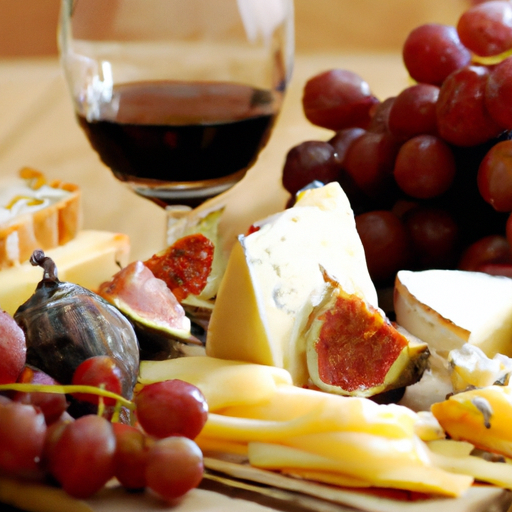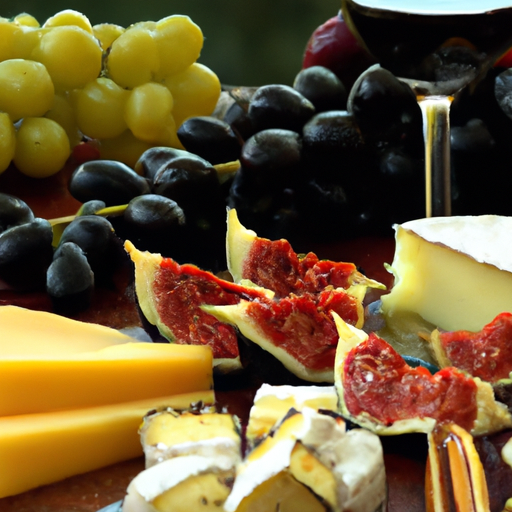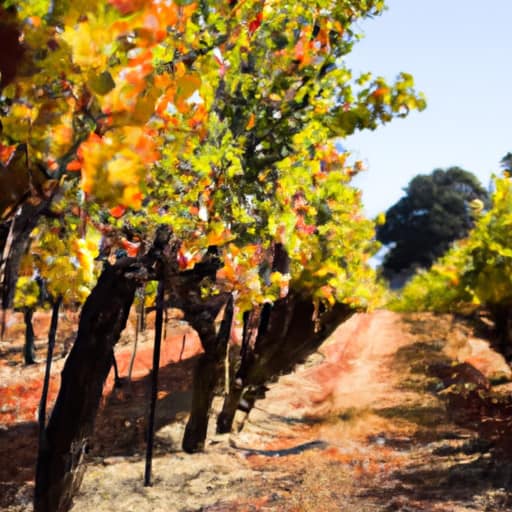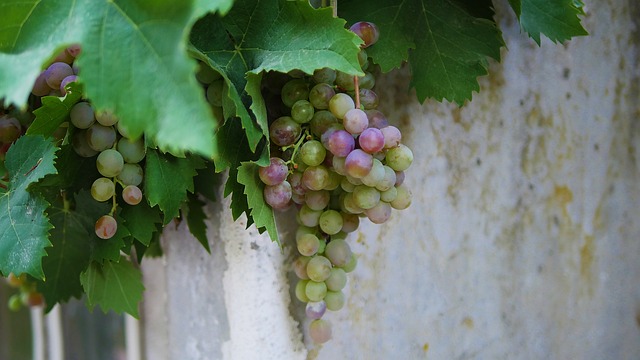Wine and Cheese Pairing Guide
Hello there! Have you ever wondered how to perfectly pair wine and artisanal cheese? Well, you’re in luck, because we have just the guide for you! In this article, we’ll explore the wonderful world of wine and cheese pairing and give you some helpful tips on creating the ultimate cheeseboard for your next gathering. From creamy bries to bold blues, we’ll cover it all, ensuring that your taste buds are in for a treat!
Curious to learn more? Well, keep reading! In the following paragraphs, we’ll delve into the different types of cheese and wine and discuss the principles behind pairing them together. You’ll discover how certain flavors and textures complement each other and how to find the perfect balance between your favorite wine and artisanal cheese. So, whether you’re hosting a dinner party or simply looking to elevate your next Netflix night, this article is your go-to resource for all things wine and cheese pairing. Cheers to that!
Wine and Cheese Pairing Guide
Understanding Wine and Cheese Pairing
Few combinations can compare to wine and cheese when it comes to enjoying a sophisticated and satisfying culinary experience. The harmony between these two culinary delights has been celebrated for centuries, with a rich history across different cultures and regions. In this guide, we will delve into the art of wine and cheese pairing, exploring why they pair so well together, the different types of wines and cheeses available, and the basic principles and tips for successful pairings. So, grab a glass of your favorite wine and get ready to embark on a delectable journey of discovery.
Defining Wine and Cheese Pairing
Wine and cheese pairing is the practice of selecting and serving specific wines with complementary cheeses to enhance and elevate both flavors. This artful combination is more than just a matter of personal preference; it relies on scientific principles and understanding the impact certain flavors, aromas, and textures can have on each other. When done correctly, wine and cheese pairing can create a harmonious balance on the palate, enhancing the tasting experience and leaving a lasting impression.
Why Wine and Cheese Pair Well Together
The natural affinity of wine and cheese lies in their shared characteristics. Both wine and cheese are fermentation products, resulting in complex flavors that can be influenced by aging, region, and production methods. Wine, with its acidity, tannins, and range of flavors, can cut through the richness and creaminess of the cheese, cleansing the palate and preparing it for the next delicious bite. Conversely, cheese can mellow out the boldness and astringency of wines, making them more approachable and enjoyable.

The Importance of Pairing the Right Wine and Cheese
Pairing the right wine with cheese can greatly enhance the tasting experience, allowing the flavors to harmonize and complement each other. A poorly matched pairing, on the other hand, can result in a clash of flavors or an imbalance that detracts from the enjoyment. By understanding the basic principles of wine and cheese pairing and experimenting with different combinations, you can create memorable culinary experiences that will impress and satisfy your guests.
Types of Wine
Before diving into the intricacies of wine and cheese pairings, you must familiarize yourself with the different types of wines available. Here are some of the most common varieties:
Red Wine Varieties
Red wines are typically made from dark-colored grapes and are known for their robust flavors and tannins. Popular red wine varieties include Cabernet Sauvignon, Merlot, Pinot Noir, and Syrah.
White Wine Varieties
White wines are made from light-colored grapes known for their refreshing and crisp characteristics. Popular white wine varieties include Chardonnay, Sauvignon Blanc, Riesling, and Pinot Grigio.
Rosé Wine Varieties
Rosé or blush wines have a pink hue and are typically made from red grapes. They offer a balanced flavor profile between red and white wines, with fruity and floral notes.
Sparkling Wine Varieties
Sparkling wines are effervescent and celebratory in nature and are made using various methods. Champagne, Prosecco, and Cava are examples of famous sparkling wine varieties.
Fortified Wine Varieties
Fortified wines have been infused with distilled spirits, producing higher alcohol content. Port, Sherry, and Madeira are examples of popular fortified wine varieties.
Types of Cheese
Just as there are countless varieties of wine, a wide range of cheeses are available to pair with them. Here are some of the most common types of cheeses:
Soft Cheese Varieties
Soft cheeses have a creamy and spreadable texture. They are often mild and buttery in flavor. Examples of soft cheese varieties include Brie, Camembert, and Goat Cheese.
Hard Cheese Varieties
Hard cheeses have a firm and dense texture. They can range from mild and nutty to sharp and tangy in flavor. Examples of hard cheese varieties include Cheddar, Parmesan, and Gouda.
Semi-soft Cheese Varieties
Semi-soft cheeses have a smooth and pliable texture. They are often mild and slightly tangy in flavor. Examples of semi-soft cheese varieties include Gruyère, Monterey Jack, and Havarti.
Blue Cheese Varieties
Blue cheeses have a distinctive blue or green mold running through them, giving them a tangy flavor. Examples of blue cheese varieties include Roquefort, Stilton, and Gorgonzola.
Fresh Cheese Varieties
Fresh cheeses are unaged and have a soft and creamy texture. They are typically mild and slightly tangy in flavor. Examples of fresh cheese varieties include Mozzarella, Ricotta, and Cottage Cheese.

Basic Principles of Wine and Cheese Pairing
Pairing wine and cheese involves considering factors such as intensity levels, complementary flavors, textures, and regional pairings. By understanding these basic principles, you can create harmonious pairings that bring out the best in the wine and the cheese.
Matching Intensity Levels
One of the key principles in wine and cheese pairing is matching the intensity levels of the wine and the cheese. Intensity can be categorized as mild, medium, or bold. A general guideline is to pair mild wines with mild cheeses, medium wines with medium, and bold wines with bold cheeses. This helps ensure that neither the wine nor the cheese overpowers the other.
Complementing Flavors
Pairing wines and cheeses with complementary flavors can create a delightful fusion of tastes. Consider the flavor profiles of both the wine and the cheese. For example, a fruity and acidic wine may pair well with tangy and creamy cheese. Cheese with similar earthy flavors may enhance a wine with earthy notes. Experiment with different flavor combinations to discover your personal preferences.
Balancing Textures
Texture plays an important role in wine and cheese pairing. Consider whether the cheese has a soft, creamy, firm, or crumbly texture. Pairing a creamy cheese with a crisp and acidic wine can create an interesting contrast, while pairing a firm cheese with a wine that has a velvety texture can create a harmonious balance.
Considering Regional Pairings
Regional traditions and flavors can also influence wine and cheese pairings. Certain wines and cheeses have a long-standing history of being consumed together in specific regions. For example, it is common in France to pair Bordeaux wines with Brie or Camembert cheese. Exploring these regional pairings can provide insight into the cultural significance and enhance your overall tasting experience.
Pairing Recommendations
Now that you understand the principles of wine and cheese pairing let’s explore some specific pairing recommendations that will impress your taste buds. Remember that these suggestions are just the beginning, and you are encouraged to experiment and discover your favorite combinations.
Bold Reds with Aged Cheddar
The robust flavors and high tannins of bold red wines, such as Cabernet Sauvignon or Malbec, pair beautifully with the sharp and nutty flavors of aged cheddar cheese. The intensity of the wine can stand up to the boldness of the cheese, resulting in a harmonious balance of flavors.
Sauvignon Blanc with Goat Cheese
The crisp acidity and herbaceous notes of Sauvignon Blanc complement goat cheese’s creamy and tangy flavors. The zesty citrus characteristics of the wine provide a refreshing contrast to the cheese, creating a vibrant and enjoyable pairing.
Chardonnay with Brie
The buttery and velvety texture of Brie cheese is a perfect match for Chardonnay’s rich and creamy flavors. The oaky and vanilla undertones of the wine enhance the indulgence of the cheese, creating a luxurious pairing.
Sparkling Wine with Gruyère
The effervescence and acidity of sparkling wine, such as Champagne or Prosecco, can cut through the nutty and caramel flavors of Gruyère cheese. The lively bubbles provide a palate-cleansing sensation, making this pairing both refreshing and satisfying.
Port with Stilton
The sweet and fruity characteristics of Port wine complement the pungent and tangy flavors of Stilton cheese. The rich and complex flavors of the wine enhance the boldness of the cheese, resulting in a memorable and decadent pairing.
Exploring Regional Pairings
To truly immerse yourself in the wine and cheese pairing world, it is worthwhile to explore the regional traditions and specific pairings that have stood the test of time.
French Wine and Cheese Pairings
France is renowned for its exquisite wines and cheeses. Some classic French wine and cheese pairings include pairing Burgundy wines with Époisses cheese, Bordeaux wines with Roquefort cheese, and Champagne with Brie cheese. These traditions have been developed over centuries and are celebrated for their harmonious flavors.
Italian Wine and Cheese Pairings
Italy is known for its diverse cuisine and extensive wine and cheese offerings. Some classic Italian wine and cheese pairings include pairing Chianti wines with Pecorino cheese, Barolo wines with Parmigiano Reggiano cheese, and Prosecco with Mozzarella cheese. The regional diversity in Italy opens up a world of possibilities for exploring unique and delightful combinations.
Spanish Wine and Cheese Pairings
Spain boasts a rich culinary heritage; its wines and cheeses are no exception. Some classic Spanish wine and cheese pairings include pairing Rioja wines with Manchego cheese, Sherry with Idiazabal cheese, and Cava with Tetilla cheese. These pairings showcase the distinct flavors of Spain and provide a taste of its vibrant culture.
American Wine and Cheese Pairings
The United States has gained recognition for its impressive wine and cheese offerings in recent years. Some classic American wine and cheese pairings include pairing California Cabernet Sauvignon with Monterey Jack cheese, Oregon Pinot Noir with Tillamook Cheddar cheese, and New York Riesling with Finger Lakes goat cheese. These pairings highlight the diverse wine regions and cheese producers across the country.
Tips for Successful Pairings
Pairing wine and cheese is as much an art as a science. Here are some tips to keep in mind when creating successful pairings:
Experiment with Different Combinations
Don’t be afraid to try new and unexpected combinations. The world of wine and cheese is vast, and you may discover a hidden gem by stepping outside the traditional pairings.
Consider the Overall Experience
Pairing wine and cheese is not just about taste but also the overall sensory experience. Consider aroma, texture, and presentation when creating your pairings.
Take Note of Personal Preferences
Everyone’s taste preferences are unique, so it is important to consider what you enjoy personally. Pay attention to the flavors, aromas, and textures that resonate most with you.
Seek Expert Recommendations
If you are unsure where to begin or want to expand your knowledge, don’t hesitate to seek recommendations from wine and cheese experts. They can provide valuable insights and guide you toward exceptional pairings.
Enhancing the Pairing Experience
To truly elevate the enjoyment of your wine and cheese pairings, consider the following factors:
Accompaniments and Condiments
Pairing wine and cheese with complementary accompaniments and condiments can further enhance the flavors and textures. For added depth and complexity, consider serving your pairings with crusty bread, honey, dried fruits, or nuts.
Temperature Considerations
The temperature at which wine and cheese are served can greatly impact the tasting experience. Generally, white wines are best served chilled, while red wines are best served at room temperature. Cheese should come to room temperature before serving, allowing the full expression of flavors and aromas.
Presentation and Serving Suggestions
Taking the time to carefully present your pairings can enhance the visual appeal and overall experience. Consider serving the cheese with tasting notes or descriptive labels on a wooden board. Providing appropriate wine glasses and decanting the wine when necessary can also contribute to a more refined tasting experience.
Creating Memorable Wine and Cheese Pairings
To truly make your wine and cheese pairings memorable, consider engaging in the following activities:
Customizing Pairings for Specific Occasions
Tailor your wine and cheese pairings to suit different occasions, such as intimate dinners, casual gatherings, or celebratory events. Consider your guests’ preferences and dietary restrictions to create a memorable experience for everyone.
Matching Wine and Cheese with Seasonal Foods
Incorporating seasonal ingredients and flavors into your pairings can add a special touch. Consider pairing wines and cheeses with seasonal fruits, vegetables, or spices for a truly unique and memorable combination.
Exploring Unique and Unconventional Pairings
Don’t be afraid to think outside the box and explore unconventional pairings. Sometimes the most unexpected combinations can result in extraordinary flavor experiences. Be open to experimentation and allow your creativity to guide you.
Conclusion
Mastering the art of wine and cheese pairing is a delightful journey that allows you to explore the flavors, aromas, and textures these culinary delights offer. By understanding the principles of intensity, flavor complementarity, texture balancing, and regional traditions, you can create memorable pairings that elevate the enjoyment of the wine and the cheese. So, the next time you find yourself with a glass of wine and a plate of artisanal cheese, let your taste buds guide you on a delectable adventure of discovery. Cheers!






